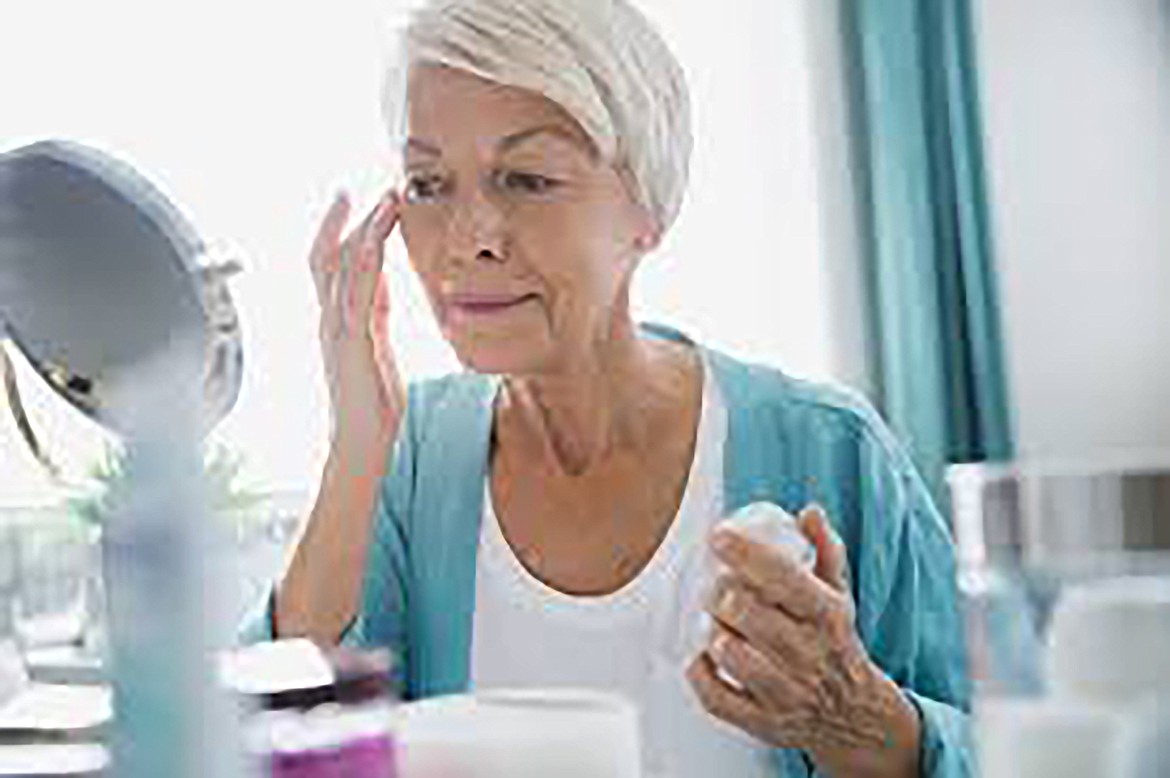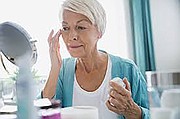Rejuvenating your skin care during menopause
Menopause is that season of life where hormonal changes can lead to uneven skin tone, changes in skin texture, including dryness. It’s a time when your skin care routine of your 20s, 30, and 40s just won’t cut it anymore.
So while you’re busy dealing with hot flashes, night sweats, insomnia, weight gain, and irritability, sometimes drier skin seems like a minor issue. Fortunately, while those other things can be uncontrollable, rejuvenating your skin can be easier.
The dermis is the layer of skin that you don’t see. It’s the thickest layer of your skin where all the action happens: fibrous and elastic tissue provide strength and flexibility, blood capillaries, sweat and oil glands, nerve endings, and hair follicles. It also happens to be sensitive to the hormonal changes that usher in menopause.
According to the American College of Obstetricians and Gynecologists, the average age of menopause, which is when a woman goes one year without a menstrual cycle, is 51 years. But this transition can begin years earlier, in the late 30s, or 40s. This time period is called perimenopause. It depends on when a woman’s cycle and ovulation becomes less regular. As I once heard, “It’s like the ovaries go into retirement.”
This is caused by the fluctuating hormones. Estrogen and progesterone levels become inconsistent. Throughout perimenopause they can be a roller coaster. When menopause is completed, estrogen levels drop to almost nothing.
All this internal chaos impacts your skin. Estrogen receptors play a role in sebum production, which keeps skin lubricated and promotes normal collagen production, the main building block that gives skin structure. Lessened estrogen leads to a decrease in skin thickness. You may see sagging and volume loss in your skin.
Testosterone decreases as well. This affects the sebaceous (oil) gland activity. Those prone to acne may notice it has ceased. On the downside, dryness makes wrinkles appear more pronounced.
In a 2019 study published in the American Journal of Physical Anthropology, researchers found, “Age-related facial shape change was similar in both sexes until around the age of 50, at which time the female aging trajectory turned sharply. The overall magnitude of facial shape change (aging rate) was higher in women than men, especially in early post menopause.” Here are some tips to help restore a healthy glow to your skin.
Hydrate
I’m starting with hydration because dry skin is one of the most common complaints. You’ll want to use more moisturizing products, such as a creamy cleanser or super-fatted bar. You may find a richer cream at night is what your skin is begging for. Save the lighter moisturizers for the daytime under makeup. I’ve said it before, but spritzing some aloe juice on your skin before moisturizing is very helpful. Moisturizers with (naturally derived) ceramides lock moisture in the skin. Another helpful ingredient is hyaluronic acid (HA). This is naturally found in your skin. HA pulls water from the environment to hydrate skin. Hydrating your skin will help plump things up and feel supple.
Fighting Wrinkles
Retinoids continue to be the go-to for eliminating wrinkles. These vitamin A derivatives can be gotten through a prescription or in milder over-the-counter versions. Both promote increasing skin thickness and cellular turnover to reveal a fresh and brighter appearance of the skin. Their drawback with them is that they are inherently drying, which can worsen an already dry, parched skin. If you are considering using these very effective products, start slowly; maybe once or twice a week for 4 – 6 weeks before applying more as your skin will tolerate. If the prescription Retin-A is too much, consider a retinol, which is a weaker form of retinoids that is available over-the-counter.
If you find that neither are compatible with your skin, try products that contain peptides, which are proteins that promote collagen production.
Sunscreen
Hopefully wearing sunscreen is already part of your daily routine. You’ll have added incentive to use it after learning that one of estrogen’s benefits is protecting skin from damage caused by UV exposure. With waning estrogen levels, now more than ever, it’s time to make daily sunscreen application, with an SPF of 30, part of your daily routine.
Menopause is a natural process which is a sign that a woman’s body is working just as designed. As women, we’ve learned to make many adjustments throughout our lives. Now’s the time to adjust your skin care routine for this new season in life.
Diana Marie Nelson is a certified clinical cosmetologist, cosmetologist, and make-up artist. Diana can be contacted at dianamarienelson1210@gmail.com. Or follow her on Facebook at Diana Marie Nelson.







